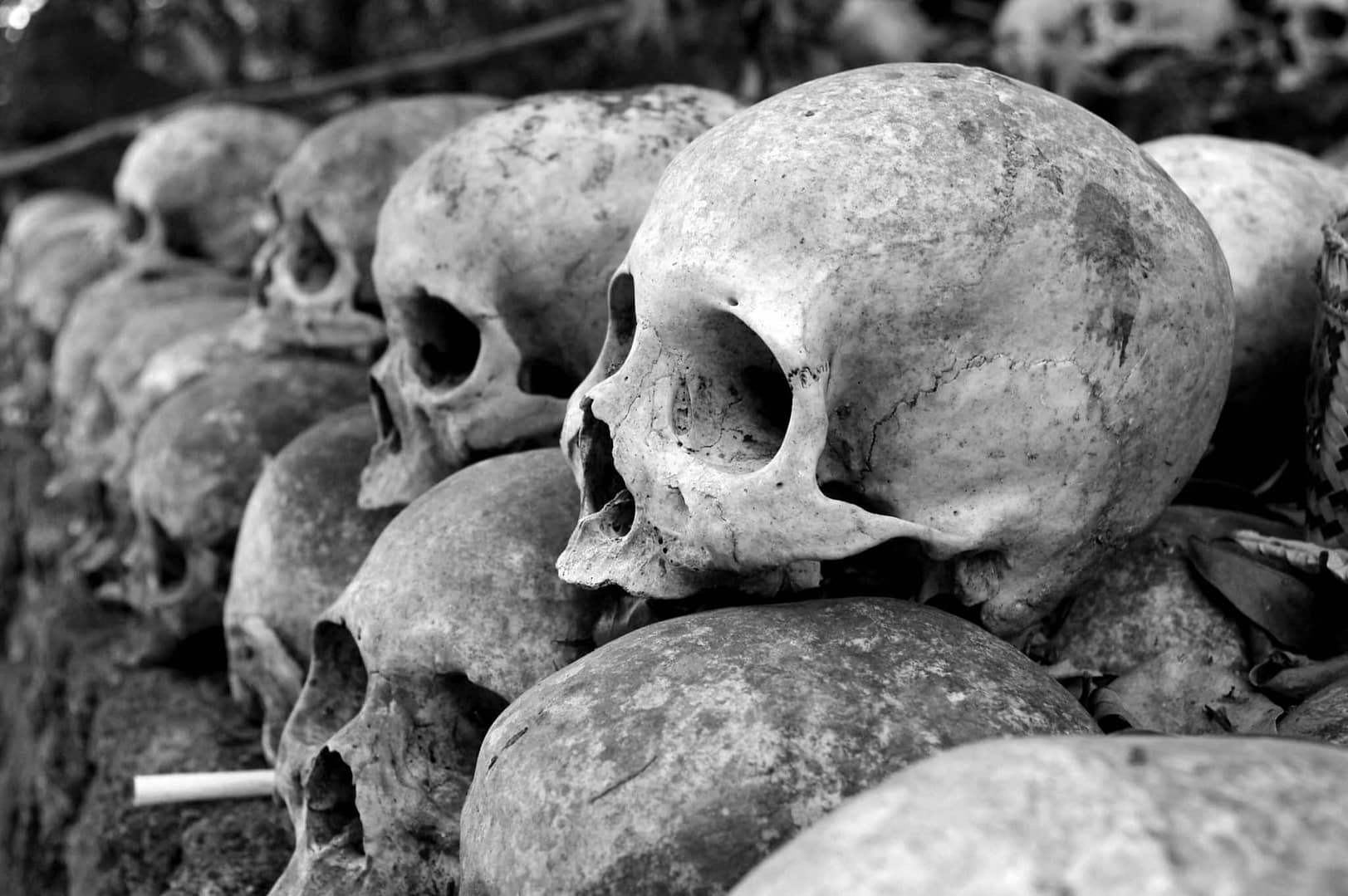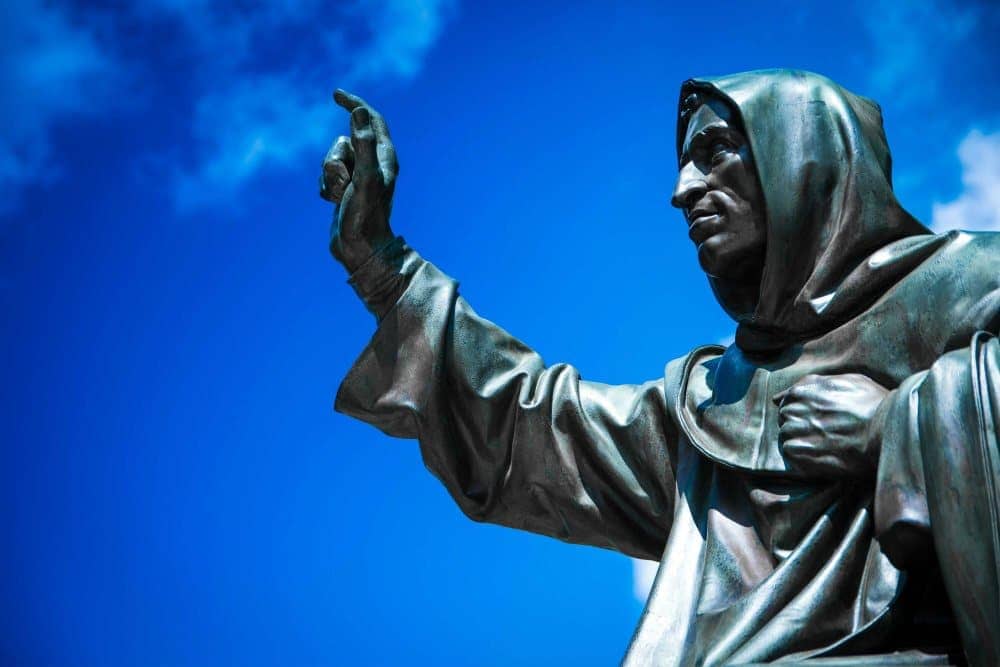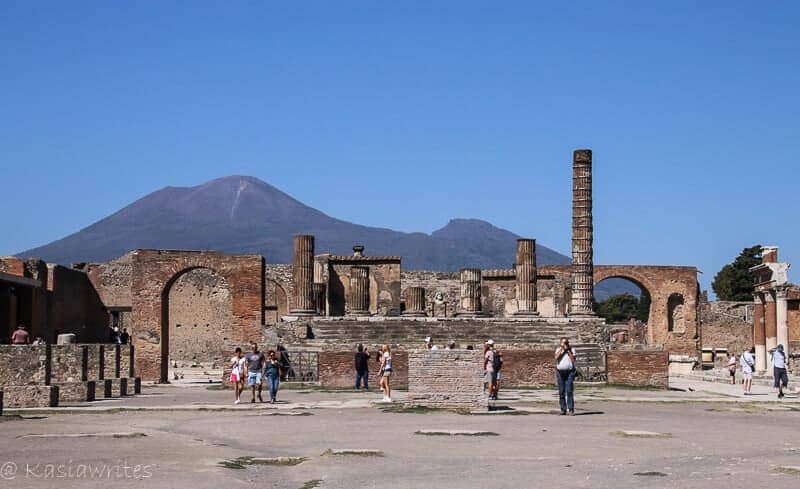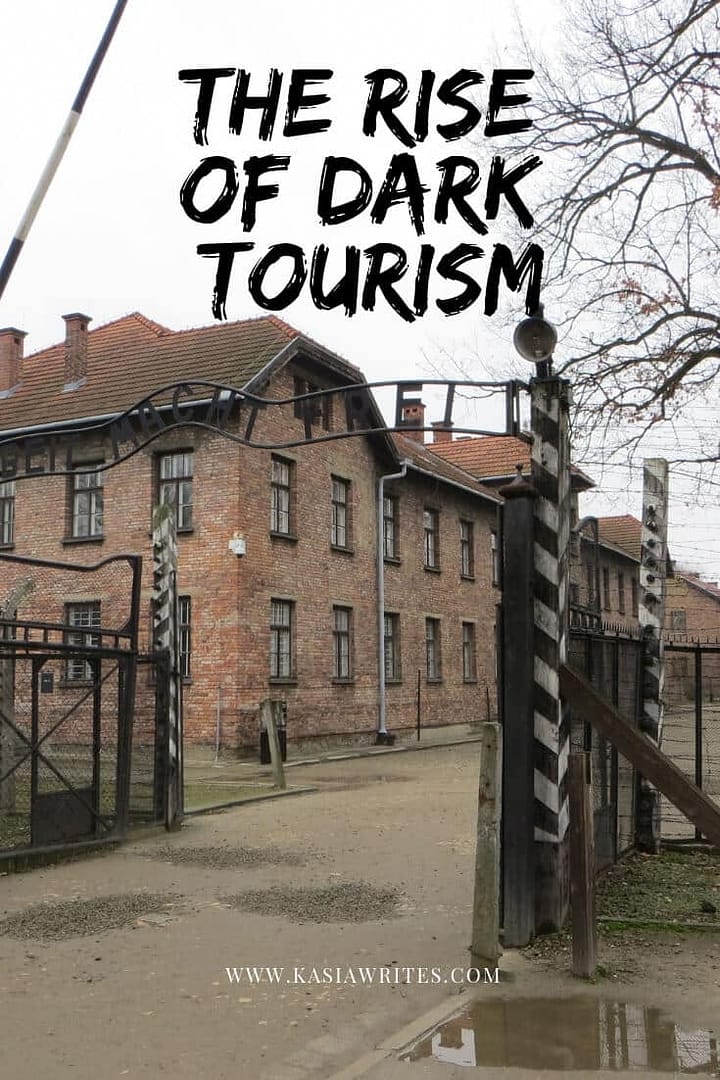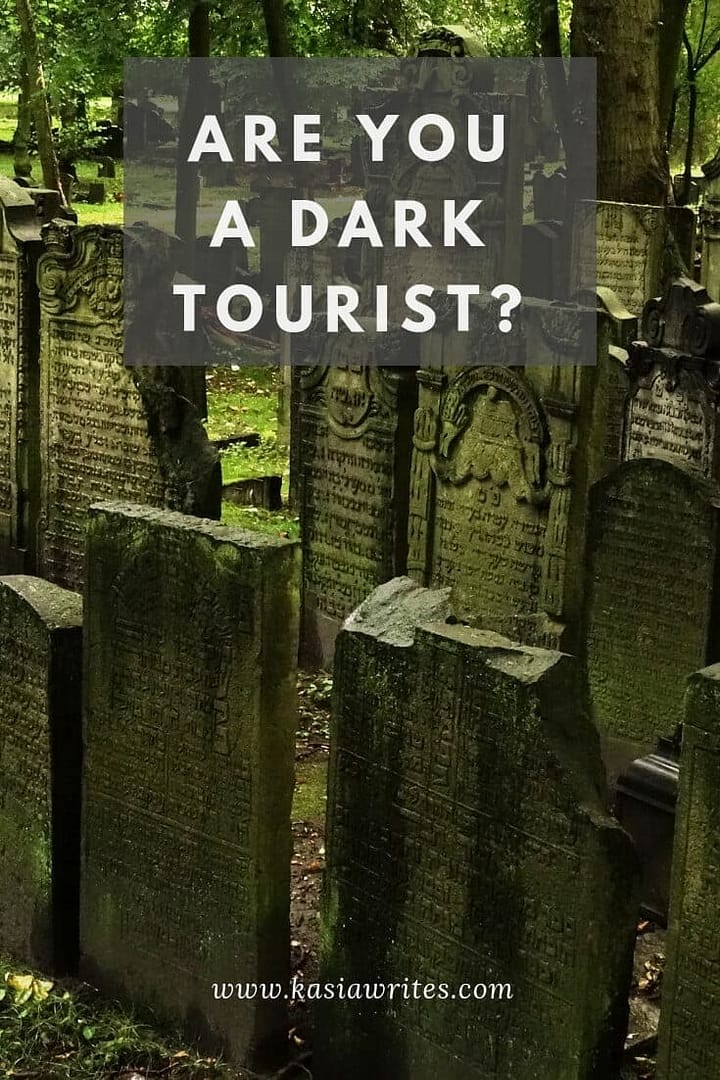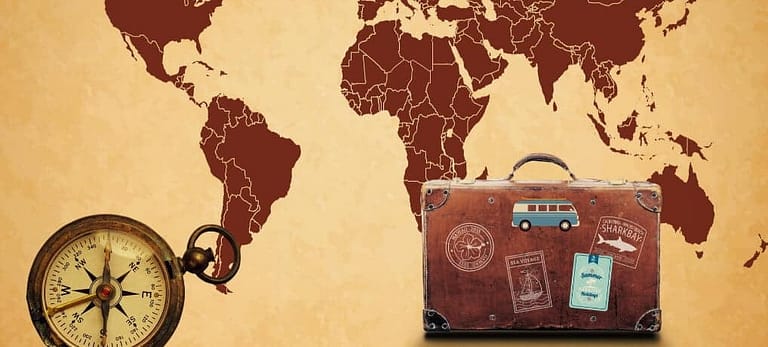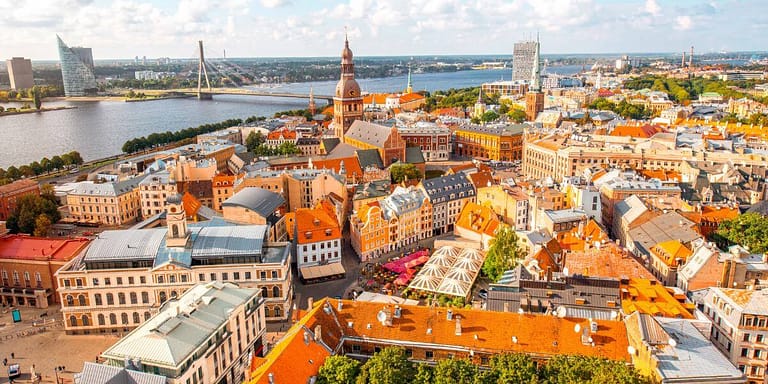Dark Tourism: The Allure of Death and Disaster
Dark tourism, also known as death tourism or disaster tourism, is a type of travel that’s been on the rise in recent years. The allure of death and disaster has led many travellers to seek destinations with a dark past, from haunted sites to places of tragedy. In fact, many of us have participated in this form of tourism without even realizing it. It’s a side of tourism that is both intriguing and thought-provoking.
Despite the catchy name, dark tourism is not just a passing new trend. In fact, people throughout centuries have been travelling to places of death and destruction for many different reasons. So what exactly is it, and what makes dark tourism so popular? Let’s look at the history behind the trend and some of the most popular destinations for those seeking to explore this macabre niche.
Affiliate Disclosure – This post contains affiliate links. If you make a purchase through these links, I may earn a commission. This doesn’t affect your purchases or any fees you may pay for the product or service. Read more in my DISCLAIMER.
Dark tourism: Morbid curiosity or historical interest?
Wikipedia defines dark tourism as “travel to places historically associated with death and tragedy.” Some of us do so without giving it much thought, and we have been doing so for centuries. Others seek it out and venture to places of tragedy and sadness for a whole list of reasons.
There is a human need to understand the past, and unfortunately, places associated with gruesome deaths and atrocities provide that opportunity. We visit sites of death and sorrow for various reasons. Whether consciously planning it or not, the motivations are very similar.
Many travellers who seek out such places do so to understand the past and pay respects to those who lost their lives. These places show us a glimpse into the darkness as well as the perseverance of the human soul. Is it a fun and carefree experience? Definitely not, but neither is life.
There are many negative connotations associated with dark tourism. Some view it as perverse or inappropriate, and others don’t understand the appeal. However, dark tourism is not about people taking smiling selfies while visiting concentration camps. There is a poignant element there that can transform you into a more conscious and open-minded traveller.
different types of dark tourism
Despite what we might imagine, there are many different elements that categorize dark tourism than we can imagine. Different categories make up this vast genre, and they often overlap. There are several loose definitions, including disasters and human tragedies, and I’ve grouped them into a few sub-categories that share a particular theme or association. Remember that these can be even further broken down, depending on how specific you want to get.
Natural and man-made disaster sites
The power of nature can inspire awe in all of us. It can destroy cities and lives in seconds, changing landscapes and history. When we make a mess, intentional or otherwise, nature has a way of taking over. Think of places like Fukushima, Chornobyl or Pompeii. All show us how fast life can change due to human error or the unforgiving power of Mother Nature.

I think these types of places draw us because they make us question our mortality. We relate to the people who were going on about their daily lives, unaware of a disaster lurking around the corner. We can imagine the fear, panic and desperation of their last moments, and we feel for them. Understanding these unfortunate events also provides us with tools that help us better prevent and predict similar disasters.
Resting places of the dead
A visit to the cemetery might not seem like a touristy thing to do, but for many people out there, cemeteries rank high on their must-see list of attractions. Resting places, especially the famous or the infamous, fall under dark tourism and have been popular for generations. People have been glorifying their dead since the beginning of time, so it’s no wonder that we are drawn to monuments, shrines, catacombs and cemeteries.

Pere Lachaise in Paris, one of the most famed cemeteries, is home to many famous residents who attract visitors each year. Like Oscar Wilde and Jim Morrison, some graves had barriers installed to protect them from damage caused by eager visitors. Some come to show respect, others to feel closer to their idols. Some do it for kicks. The intent sometimes becomes a blurred line.
Monuments like the Pantheon, Sedlec Ossuary in the Czech Republic, Paris catacombs and the Holocaust Memorial in Berlin have become popular tourist destinations. They provide us with a real connection to the past and the people that left their mark on history.
Sites of atrocities, massacres, terrorism
Places associated with mass deaths are also making the list of dark tourism sites that visitors flock to in huge numbers. Visiting battlefields, mass execution, and genocide sites can be educational and commemorative. It also evokes many feelings in us, including anger and sorrow toward the perpetrators and their victims. It allows us to grieve for those who lost their lives in such tragic circumstances and pay our respects.
The Cambodian killing fields or the 911 Memorial are just some places that fall into this category. We easily identify with them, and for many, they are still very fresh in their minds. While you might not automatically think the same about the Colosseum in Rome, it, too, has been the site of mass executions. Many human and animal lives were lost here for the entertainment and pleasure of others. Judging by the number of visitors each year, the Colosseum’s dark past hasn’t dampened its appeal.
Places of torture, persecution and confinement
While Alcatraz prisoners spent their days dreaming of lost freedom, today, the infamous prison is a tourist attraction where people pay money to visit. Once a fear-inducing landmark, the Tower of London is now a tourist attraction for crowds flocking to the city. Once an infamous prison, Toronto’s own Don Jail is now an administrative office that offers visitors access to the former jail cells and areas during the annual Doors Open Toronto.

Once meant to confine and punish, these places have acquired an element of entertainment that sometimes loses the historical significance of what happened there and the many lives that were lost in the process. Many people often visiting these sites don’t think of them as places where death and punishment were a common occurrence and were feared by many.
It’s a different story for places like the Auschwitz-Birkenau concentration camp, where the reminders of past atrocities are still evident today. The reality of the horrors that occurred here is inescapable. They are reminders of a dark past and hope for the future. Judging by the increasing numbers of visitors arriving through the gates each year, that isn’t stopping people from visiting. While many visit these dark places to pay respect to those that perished, many others come because of a personal connection – it’s a place where distant relatives died or were imprisoned.
Sensational sites
There is something about the lives and deaths of famous people that seems to fascinate us. Where they lived and died often becomes a destination for fans across generations. Think of JFK’s assassination, the shooting of John Lennon, Gianni Versace or even the site of Princess Diana’s car crash. Each place has become an important thread in the fabric of today’s society. Maybe it’s not something that automatically comes to mind when you think of dark tourism, but it’s precisely that.

Hollywood tours of dead celebrity homes, former estates of dictators, drug dealers, and other notorious figures attract visitors in huge numbers. They become just another element in the long list of dark tourism attractions. More so than anything else, curiosity is probably one of the strongest reasons for these types of places to visit. After all, the best way to understand the past is to walk in the footsteps of those that shaped it.
Some cities draw visitors because they were home to notorious characters, murderers and tragic deaths. From ghost tours to visiting homes and hunting grounds of murderers and thieves, dark tourism is bringing visitors looking for a thrill and adventure. While you might think of that as entertainment, it’s just another side of being a dark tourist.
Dark exhibitions
Dark exhibitions have been attracting people for centuries. Quite often, they intend to educate, commemorate and honour the death and suffering. In the past, however, I think they mainly aimed to satisfy curiosity and provide shock value. Our ancestors were drawn to the macabre, from shrunken heads and Egyptian mummies to displaying “oddities” at fairs.

Today, dark exhibitions are usually temporary and travel around different locations. The subjects are endless, from visuals documenting events or human conditions, objects from significant sights, or focusing on specific people. Some topics still spark controversy and debate, proving that not all of us agree on the matter.
You might recall the Body Worlds exhibition that has been touring the world since 1995. It offers visitors an opportunity to see the human body under the skin. It aims to educate people about human bodies and the health effects of different lifestyles. The exhibition caused a stir when it came out. Seeing real human specimens laid out in different anatomical poses didn’t go well with everyone, but the overall takeaway was positive.
Experiential/Risk tourism
This category seems to be the most niche of all types of dark tourism. Visiting active war zones, slums, and other dangerous areas for the experience appears to be a sub-group of its own. The dangerous risks aside, this type of travel has a voyeuristic element that doesn’t sit well. In Brazil, you’ll find many tours that take visitors through the favelas of Rio de Janeiro. Unlike visiting places dedicated to the dead, here you deal with real people whose lives are on display for someone else’s entertainment.

Are we learning and expanding our views, or are we just making ourselves feel better about our lives? This seems to be the dilemma associated with these types of experiences. Are they helpful to the locals, or do they completely exploit them?
While illegal border crossings by undocumented immigrants are a genuine element of people’s lives today, you, too, can go through the experience. What does paying for a simulated border Mexico/USA crossing experience say about you? Some argue it provides an insight into the desperate plight of people looking for better lives. To others, it undermines a dangerous and emotional reality faced by many each day.
Discovering the Macabre: history of dark tourism
Dark tourism might be the latest catchphrase, but the concept isn’t new at all. Our fascination with death and murder has existed since the beginning of time. When death, especially by violent means, was a common occurrence also made it acceptable for entertainment.
The Romans, famous for obliterating those who got in their way, celebrated victories with others’ death. Victorious generals returning home often brought with them the riches stolen from those they conquered. Often they also brought slaves and paraded them in front of cheering crowds.
People would travel from nearby towns to partake in celebrations or attend spectacles held at the Colosseum and other Roman theatres. They came to see death and murder, and they were early dark tourists before that was even a concept.
Public executions also were an early form of dark tourism. Held in the local town square, executions were often another form of entertainment for the masses. Whole families would travel from nearby towns to witness public hangings, beheadings and other forms of punishment deemed to fit the crime.

During the 17th and 18th centuries, asylum tourism flourished in Britain. Bedlam, London’s first mental hospital, became an entertainment source for the ghoulish public, who laughed, pointed, and mocked the mentally ill. Not only were the conditions of the patients deplorable, the visiting public often exploited them as well. As institutions for the mentally ill were improved in later years, people were encouraged to admire the architecture and design as part of their visit.
The psychology behind dark tourism: why we’re intrigued
As mentioned before, there are many different motivations behind dark tourism. As the conversations around the subject evolve, so does the understanding of why we do it. Understanding dark tourism allows us to figure out why it offers such an appeal.
It’s not a new concept but an evolving one. I saw a movie called Thrill Seekers a long time ago, and it has always stuck in my head. The movie is about a reporter who comes across a strange man who appears at various disaster sights over many years.

Through a series of events, he uncovers that the man is from the future, where a company – Thrill Seekers – offers travellers an opportunity to travel back in time to various catastrophes right before they happen. You can stroll on the deck of the Titanic before it hits the iceberg or enjoys a flight before everyone onboard dies in a fiery crash, all the time being able to leave just in time to avoid your death.
As dark tourism and technology evolve, such a scenario is not that far-fetched. With that, however, comes another issue that seems to be associated with this type of travel – ethics.
Ethics around dark tourism
I think most people can agree that we need to learn about our past, honour the lives lost and pay respects to the dead. The contention seems to be around why we do it and how the visitors’ funds are used. Many places use the funds on maintenance and staff costs. That seems perfectly reasonable when you look at the sheer size of some of these places. Is this the case with the favela tours? What about the illegal border crossing experience? Hard to say.
Recommended reading:
- How ‘dark tourism’ can pass on the lessons of past tragedies
- How “Dark Tourism” Warps Our Understanding of History
- Atlas Obscura: The definition of dark tourism
Most people visit dark places wanting to pay their respects. As history shows, people have done it in the past for entertainment. There are probably many today who do it for the thrills (war zones might come to mind). While we might question others’ motivations, it’s important to understand why we do it ourselves.
I’ve visited the Tower of London and walked the streets of Pompeii as well as many other places that are associated with death and suffering. I’ve felt sorrow for those that died there, their pain and suffering. At the same time, I think I’ve grown as a person, and that experience has allowed me to look at the world around me with different eyes.
Why we’re drawn to tragedy
I think dark tourism has always been popular, but nobody really talked about it. There wasn’t a name for it until recently. As we look into the past, we can identify the elements before we knew what to call them.
Accessibility and availability contribute to the rise of dark tourism, as more places seem eager to capitalize on their dark past. There will always be a question of whether this is respecting the dead or exploiting their memories. The answer lies with us, how we act and where we spend our money as travellers.
Travel Resources
Planning your next trip? Check out the resources I use and start planning your perfect getaway today!
- Flights: Find the best flight deals on Kiwi.com (my new go-to for flights)
- Book your accommodations: Find the best prices on hotels with Booking.com
- What to do: Find the perfect tour with Viator
- Need a car? Book your ride with Rentalcars.com
Check out my travel resource guide for more resources to help you plan your trip.

